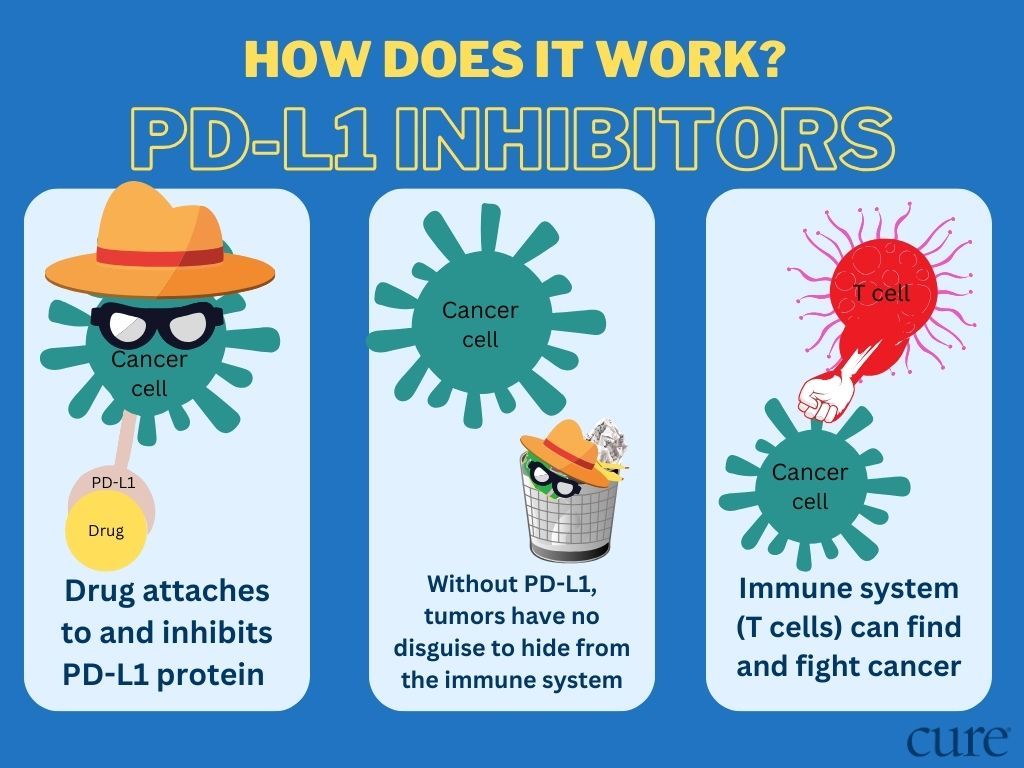News
Article
Tecentriq Plus Chemo Improves PFS in NSCLC With Brain Metastases
Author(s):
Tecentriq plus carboplatin and pemetrexed may improve efficacy in patients with NSCLC with untreated brain metastases, according to results of a phase 2 trial.
Tecentriq (atezolizumab) combined with carboplatin and pemetrexed may improve efficacy in certain patients with non-small cell lung cancer (NSCLC), according to results from a phase 2 trial.
A recent study published in Journal of Clinical Oncology reviewed the results of a phase 2 trial which investigated the treatment combination of Tecentriq and carboplatin and pemetrexed for patients with advanced NSCLC who were not previously treated for brain metastases.
When cancer metastasizes, or spreads to another area of the body, the metastatic tumor is still named after the original type of cancer an individual had, according to American Cancer Society. In the respective phase 2 trial, brain metastases in patients were caused by the advanced NSCLC, meaning the tumor in the brain was still considered NSCLC.

Tecentriq is a type of monoclonal antibody and checkpoint inhibitor that binds to and blocks a protein called PD-L1, which helps the immune system destroy cancer cells, particularly cancers that express PD-L1, according to National Cancer Institute.
Carboplatin is a type of platinum-based chemotherapy, as defined by National Cancer Institute, that damages a cell’s DNA and may destroy cancer cells. According to the Food and Drug Administration (FDA), pemetrexed is an injectable chemotherapy, which was FDA approved to treat patients with non-squamous NSCLC in 2020.
According to the study from Journal of Clinical Oncology, the phase 2 trial included 40 patients with advanced NSCLC and untreated brain metastases, among whom 20 participants previously received corticosteroids (a steroid hormone that may be used to treat certain side effects of cancer and its treatment).
The study noted that the participants’ median age was 62.5 years, 29 patients identified as men and 85% of patients had history of smoking.
The primary endpoints (the main result used to identify the effectiveness of treatment) were progression-free survival (PFS, time during and after treatment when the disease does not worsen) and side effects that were grade 3 or worse.
Overall PFS at 12 weeks was 62.2%, which exceeded the study authors’ expectation of 50%. The median intracranial (in the brain) PFS was 6.9 months, according to the study authors, and the median systemic (entire body) PFS was 8.9 months.
Regarding side effects of grade 3 or worse, the study authors established that the rates of grade 3 and 4 toxicity for the first nine weeks was 27.5%, which was “below the predefined boundary of 35%.”
The authors noted that most of the side effects related to the brain were grade 1 and 2, with five patients who experienced grade 3 and 4 toxicities. These included grade 4 hallucinations in one patient, grade 3 seizures in two patients, grade 3 sciatica (pain in the sciatic nerve from the lower back into the legs) in one patient and grade 3 spinal cord compression in one patient.
“Most (brain-related side effects) were mild or moderate, except four patients who had grade 3 and one (patient) with grade 4 (brain-related side effect) that fully recovered,” the study authors wrote.
“Treatment-related serious (side effects) were observed only in 17.5% and there was only one patient with grade 5 toxicity related to chemotherapy. This safety profile is consistent with the previously published data using this treatment combination.”
One of the secondary endpoints from the study included overall survival (OS, period from diagnosis or treatment where patients remain alive), in which the study authors determined that the median OS was 11.8 months. They also found that the estimated one-year OS rate was 50% and 27.5% for the two-year OS rate.
In previous phase 3 trials, the study authors noted, researchers determined that patients with brain metastases who received chemotherapy combined with immunotherapy had benefits, compared with patients who received chemotherapy alone.
However, the authors of the study from Journal of Clinical Oncology found that “most studies excluded patients with untreated brain lesions or receiving corticosteroids,” therefore they designed this phase 2 trial for patients with untreated brain metastases.
The study authors concluded that “future studies targeting additional immune checkpoints or integrating systemic therapies with stereotactic radiotherapy to improve the control rate and minimize the risk of brain toxicity are warranted.”
For more news on cancer updates, research and education, don’t forget to subscribe to CURE®’s newsletters here.




